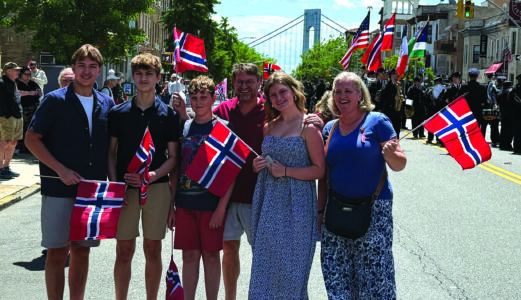There’s a reason February made Don McLean shiver in his epic saga “American Pie.” The entire song revolves around the impact Buddy Holly’s death had on McLean and all of popular music. It was on Feb. 3, 1959 that Holly perished in a plane crash that also claimed the lives of music icons J.P. “The Big Bopper” Richardson and Ritchie Valens, a date immortalized by McLean as “The day the music died.”
Holly’s star was on the rise when he died, having charted five top-20 hits including the No. 1 classic “That’ll be the Day,” which he recorded with his band the Crickets. The original group consisted of Holly, drummer Jerry Allison, bass player Joe Mauldin and rhythm guitarist Niki Sullivan. Sullivan left the group after one year.
What some people might not realize is that the Lubbock, Texas-born Holly had moved to New York City in the fall of 1958 and played successive shows at the Brooklyn Paramount Theatre located at 1 University Plaza at the intersection of Flatbush and DeKalb Avenues, the sister venue to the Paramount Theatre in Times Square.
Holly first performed at the Paramount on Sept. 5, 1957 and then again on Apr. 28 and 29, 1958. By that time Holly had moved to an apartment in Greenwich Village with his wife Maria Elena Santiago.
It was legendary radio disc jockey Alan Freed’s Great Holiday Rock and Roll Stage Show at the Paramount that first brought Holly to Brooklyn. The package show featured Holly (billed as the Crickets) along with Little Richard, the Del-Vikings, the Diamonds, the Moonglows, Mickey and Sylvia, and the Five-Keys, among others, with special guest Jimmie Rodgers.
In fact, the Crickets’ 1957 “The ‘Chirping’ Crickets” album cover was shot on the roof of the Paramount.
Charles Hardin Holly was born on Sept. 7, 1936 and exhibited a deep love of all genres of music including country, gospel and rhythm and blues. After graduating from high school in 1955, Holly decided to pursue a career in music after seeing Elvis perform live in Lubbock.
Holly’s first single, “Love Me” in 1956, did not make the pop charts, but his third single, “That’ll Be the Day,” released in 1957, climbed all the way to No. 1 in both the U.S. and England. It was followed that year by a double-sided hit single containing “Peggy Sue” and “Everyday” which made it to No. 3.
By 1958, Holly was already an acclaimed singer, songwriter and record producer. He returned to the Paramount in March to play a set of dates. This time he performed under his own name and the shows also featured stars including Jerry Lee Lewis, Chuck Berry, Frankie Lymon, the Diamonds, Danny and the Juniors, and the Crickets with their own separate listing, among others.
That same year Valens also performed at the Paramount as part of Alan Freed’s Rock ‘n’ Roll Jubilee.
Holly’s move to New York in the fall allowed him to focus more on the business side of the music industry. Allison and Mauldin chose not to move to New York as Holly’s friend, renowned Texas guitarist Sonny Curtis, joined the Crickets that year.
After the move and parting ways with his producer Norman Petty in December, 1958, Holly began recording under his own name and enlisted studio musicians Tommy Allsup and Carl Bunch to fill in behind him.
Country legend Waylon Jennings was a protégé of Holly’s and toured with him during that final year. In fact, Jennings recorded with Holly at a studio in Clovis, N.M. Holly had faith in Jennings and helped promote the future star.
In early 1959, Holly embarked on the Winder Dance Party tour. It would be short-lived however.
And so it was on that fateful February day when heating problems on his bus forced Holly to charter a small, single-engine plane to carry him and his band members at the time, including Allsup and Jennings, from an engagement in Clear Lake, Iowa.
The Big Bopper, who was suffering with the flu, asked Jennings if he would let him have his seat on the plane. Allsup lost his seat in a coin toss with Valens.
The plane crashed shortly upon taking off from the Mason City, Iowa airport.
Jennings would later say that the crash changed his life forever and he could never shake the survivor’s guilt he felt, knowing he should have been on that plane.
While Holly’s death remains a milestone event in popular music, at least those lucky enough to attend one of his shows in Brooklyn had the chance to briefly witness one of rock and roll’s true innovators whose legacy will certainly “Not Fade Away.”


 Fifth Ave. Fest offers ‘fun’ for families
Fifth Ave. Fest offers ‘fun’ for families  On the Avenue: Norwegians march through Bay Ridge, celebrate heritage
On the Avenue: Norwegians march through Bay Ridge, celebrate heritage